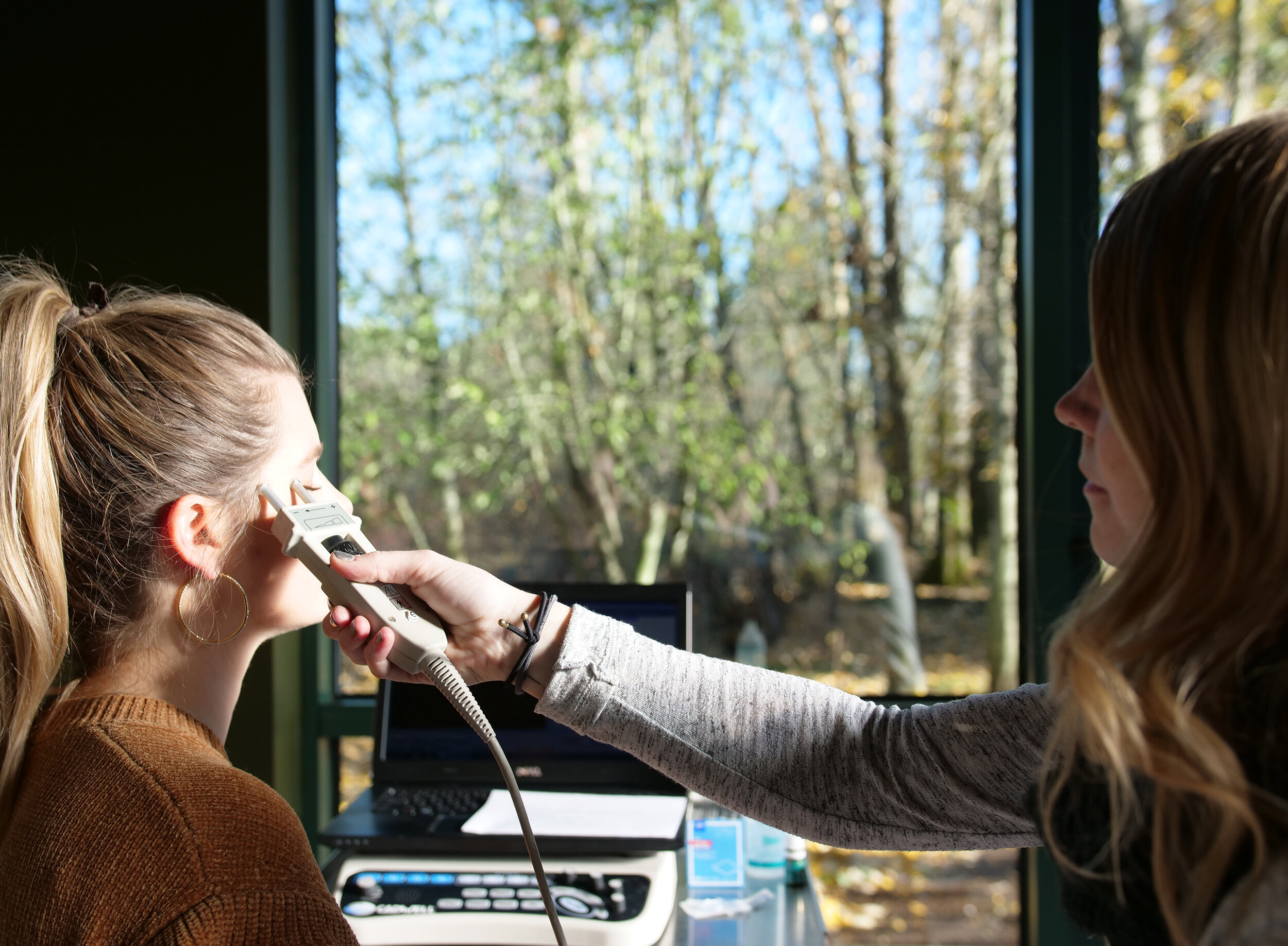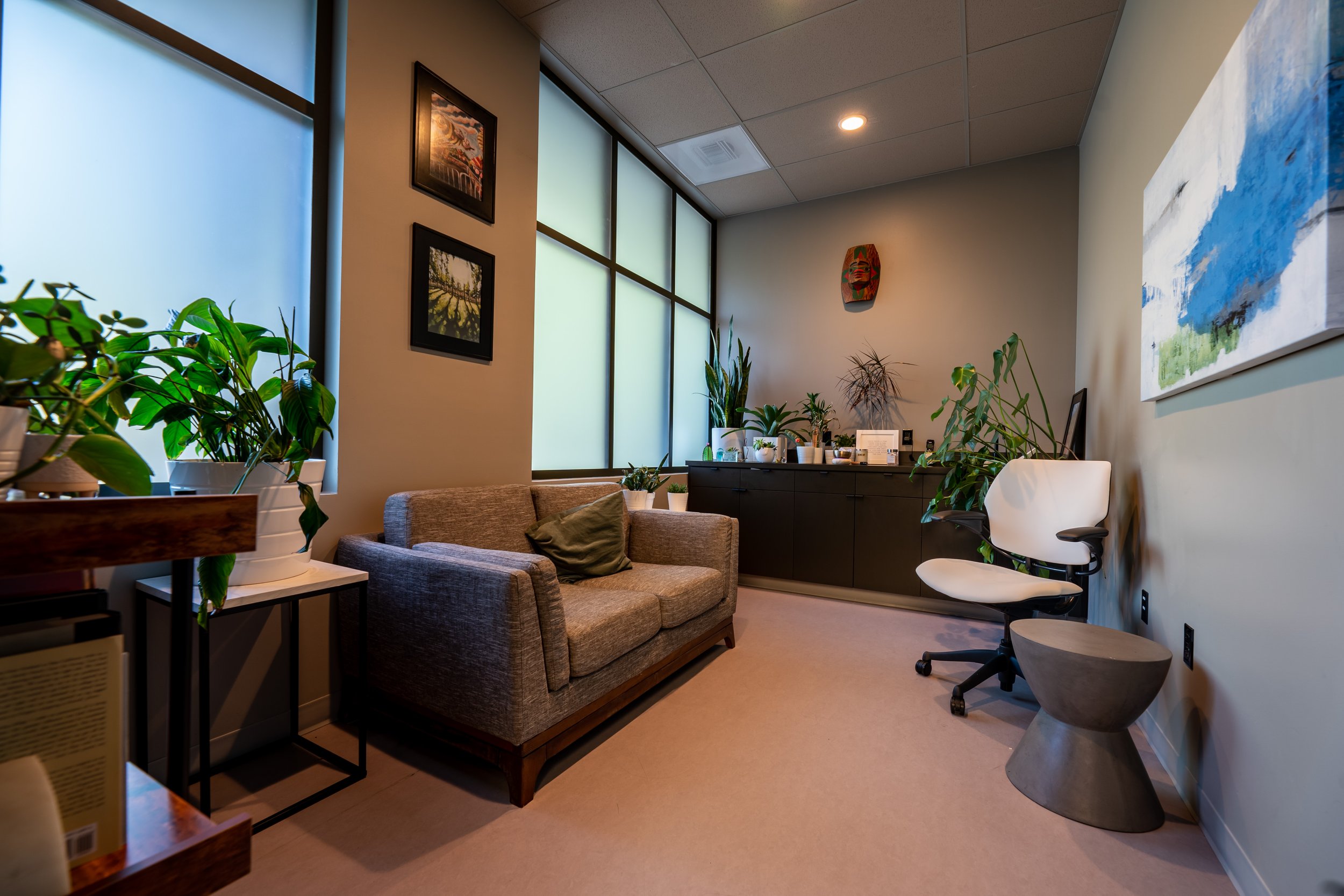
NON-INVASIVE NEUROMODULATION
WHAT IS NON-INVASIVE NEUROMODULATION?
Non-Invasive Neuromodulation (NINM) refers to a class of techniques that harness inputs from the peripheral nervous system to directly stimulate different parts of the brain and brainstem. There are many different NINM techniques. The most studied techniques, and the ones we use most frequently, involve the use of targeted electrical stimulation of peripheral nerves. This gentle repetitive stimulation can be applied in such a way as to stimulate discrete brain regions and systems. NINM helps make these central structures easier to activate, helps them to fire more effectively, and enhances endurance within these pathways.
We use several different systems of targeted electrical stimulation in your NeuroRescue Program. We rely primarily on Somatosensory Evoked Potential (SSEP) stimulation, which uses a stimulation probe to activate peripheral nerves. Depending on the nerves we choose to stimulate, we can promote specific patterns of activation in the spinal cord, brainstem, cerebellum, and parietal lobes. This leads to rapid changes within the pathways we are stimulating, improves their function directly, and makes it easier for us to functionally integrate them with other parts of your nervous system.
HOW DOES NON-INVASIVE NEUROMODULATION HELP ME?
Neuromodulation can promote functional changes within different parts of the brain in many different ways. One of these mechanisms is by restoring appropriate mapping of the body. In order for your brain to control your body appropriately, it first needs to understand where it is in space. Your brain receives inputs from your eyes to create the visual world, your inner ear to inform the brain of your head’s relationship to gravity and how it is moving, and proprioception, which is feedback from muscles and joints. This proprioceptive feedback is critical for the brain to understand relationships of body position and body movement. The brain creates a map of the body in the parietal lobe, based largely on proprioceptive input. This map is not static, but can change over time when proprioceptive input is decreased by injury or immobility. If you injure a joint such that it does not move properly for a period of time, the loss of proprioception from this region will lead to changes in the brain’s ability to map this region of the body. And if the brain is unable to properly map a body part, it will not be able to control it properly. This can lead to problems ranging from movement disorders to chronic pain. Neuromodulation uses electrical stimulation to activate peripheral nerves that carry proprioceptive information into the brain. This helps restore appropriate body mapping, leading to greatly improved neurological function.
Neuromodulation strategies have been shown to be effective in improving motor coordination and motor planning. These strategies have been shown to also stabilize balance, improve gait, enhance cognitive and executive function, inhibit chronic pain, reduce dizziness and vertigo, and improve autonomic functions such as heart rate, blood pressure, and digestion, among many others. Neuromodulation has been helpful for us in a wide range of neurological conditions, including:
Dizziness & Vertigo | Traumatic Brain Injuries & Concussions | Movement Disorders | Headaches & Migraines | Balance Disorders | Anxiety & Depression | Cognitive Difficulties | Neurodegenerative Disorders
WHAT TO EXPECT:
We use a wide variety of targeted electrical stimulation techniques. We employ SSEP, Galvanic Stimulation, Interferential Stimulation, TENS, Transcranial Direct Current Stimulation, and Rebuilder Stimulation devices. The choice of therapy will depend upon your condition and the central targets of our therapy. The therapies generally involve placing a stimulator probe on your skin in regions that give us access to specific peripheral nerves. We apply a small dab of conducting gel to your skin, then apply the probe and begin to turn up the stimulation. You will feel a gentle tingling sensation that is not painful in any way. If we are trying to stimulate motor reflexes as well, we may turn the stimulation up to the point where muscles begin to spontaneously twitch. This is again not painful, and indicates that we have brought the involved motor systems to threshold.
In other cases, we may apply electrodes into a salt water bath for your feet. This allows us to saturate far more receptors with our Rebuilder device that can be accomplished by stimulating one nerve at a time, and is very helpful for peripheral neuropathies. We may also engage in Trigeminal nerve stimulation, which involves stimulating areas of the face and tongue. Again, this is not at all painful, and allows us to directly activate brainstem structures involved in everything from dizziness and vertigo to heart rate and blood pressure regulation, and has been shown to be helpful in regulating balance, gait, cognition, and emotional states.
We may also engage in transcutaneous Vagus nerve stimulation (tVNS), which involves activating a small sensory branch of the Vagus nerve that maps a portion of the ear. The Vagus nerve is involved in regulation of many autonomic functions such as stress modulation, heart rate, blood pressure, and digestion. It is also directly involved in modulation of seizures.
FAQs
-
Yes. Multiple studies confirm the safety and efficacy of all of our neuromodulation therapies. There will be some conditions where individual therapies may be contraindicated. Your provider will be well aware of these and will only prescribe therapies that are safe for you at all times.
-
In order for a neuron to be healthy, it needs regular stimulation. When a neuron is activated within a pathway, if it is sufficiently excited by prior neurons, it will come to threshold and fire to stimulate the next neuron. Repetitive activation will cause the neuron to turn on genetic responses that will cause it to produce more protein, build new connections, and improve its ability to fire for longer periods of time. In short, activation makes a neuron healthier and more functional. Loss of appropriate activation, from injury or neurodegeneration, will cause neurons to break down, decrease protein replication, and lose their capacity to fire efficiently.
Neuromodulation strategies allow us to restore appropriate frequencies of neuronal activation. When we identify neurological structures on our examination that show a decreased level of function, in many cases we can also identify peripheral nervous system inputs that allow us to activate these structures. The brain is a sensory-driven system, and neuromodulation allows us to harness these sensory inputs to promote central plastic changes. There are ways to activate a wide variety of important brain, brainstem, cerebellar, and spinal cord structures through the peripheral nervous system. When properly activated, the central changes from neuromodulation can be profound.
-
No. Again, you will feel a gentle tingling sensation that is not painful in any way. If we are trying to stimulate motor reflexes as well, we may turn the stimulation up to the point where muscles begin to spontaneously twitch. This is again not painful, and indicates that we have brought the involved motor systems to threshold.
LET’S GET YOU BACK TO LIVING YOUR BEST LIFE
“It was like someone turned the lights on for me in my brain. It was working again.”

-
We use advanced neurodiagnostic technologies and cutting edge neurorehabilitation strategies that are unique to your brain and condition.
-
We use high frequency treatment over 5-10 days, to bring you maximum results in the shortest time possible.
